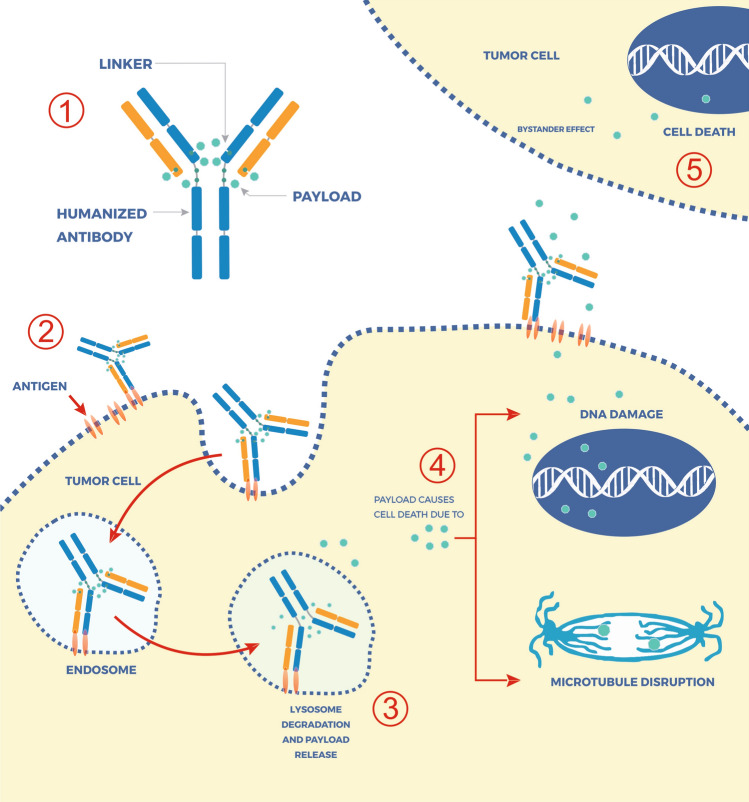Fig. 1.
Basic composition of an antibody–drug conjugate (ADC) and its mechanisms of action. (1) ADCs are composed of four key components: the target antigen, an antibody construct, a payload (most commonly a cytotoxic agent), and a linker moiety that will couple the payload and the antibody. Once the ADC is administered (2), there is the binding of the antibody to overexpressed (or specifically expressed) target tumor antigens leading to ADC internalization. Within lysosomes (3), the payload is released when the linker is cleaved by intracellular conditions, such as low pH or proteasome-mediated degradation. Depending on its mechanism of action (4), the payload will kill tumor cells through DNA damage, such as topoisomerase I inhibitors SN-38 and exatecan, or through microtubule disruption such as emtansine. Additionally, some payloads, such as SN-38 and exatecan, have a membrane-permeable nature and can cross cell membranes and exert a cytotoxic effect on bystander tumor cells (5), regardless of target antigen expression levels

